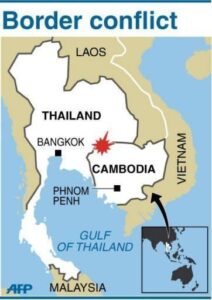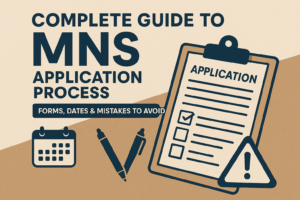Iran’s reported use of a cluster bomb during a June 19 missile strike on Israel has reignited global concerns about the destructive and long-lasting dangers of these controversial weapons.
What Happened on June 19?
On June 19, 2025, Iran reportedly fired a missile containing a cluster bomb warhead toward Israel. The Israel Defense Forces (IDF) confirmed that at least one of the projectiles launched as part of the attack dispersed submunitions, a hallmark of cluster bombs.
According to Israeli military reports, the warhead detonated approximately seven kilometres above ground, scattering nearly 20 submunitions across an eight-kilometre radius in central Israel. One of these bomblets struck a home in Azor, causing property damage but no reported casualties.
The Israeli Home Front Command promptly issued public safety advisories, warning residents not to touch unexploded objects and to report suspicious debris immediately.
What Is a Cluster Bomb?
A cluster bomb is a weapon that releases multiple smaller bombs, known as submunitions or bomblets, over a wide area. Unlike traditional missiles that explode at a single point, a cluster bomb disperses its smaller explosives mid-air, often covering several kilometres.
These submunitions are not guided and are designed to detonate upon impact. However, many fail to explode immediately, creating unexploded ordnance (UXO) that can pose risks to civilians long after a conflict ends.
Why Are Cluster Bombs Controversial?
Cluster bombs are widely criticised due to their indiscriminate impact and the lasting threat they pose to civilian populations. The primary concerns include:
-
Wide-area damage that increases the risk to non-combatants.
-
High failure rates, leading to dangerous unexploded munitions.
-
Long-term contamination of residential areas, farmlands, and infrastructure.
“They are egregious weapons with their wide-area destruction, especially if used in civilian-populated areas, and can add to the unexploded ordnance left over from conflicts,” said Daryl Kimball, Executive Director of the Arms Control Association.
How Cluster Bombs Differ From Traditional Missiles
| Feature | Cluster Bombs | Traditional Missiles |
|---|---|---|
| Detonation Method | Releases multiple bomblets mid-air | Single explosion on impact |
| Damage Area | Wide, multiple small blasts | Localised, concentrated blast |
| Civilian Risk | High (due to unexploded bomblets) | Lower compared to cluster munitions |
| Primary Concern | Long-term unexploded ordnance risk | Immediate blast damage |
How Are Cluster Bombs Different From MIRV Technology?
While both cluster bombs and MIRVs (Multiple Independently Targetable Reentry Vehicles) involve the release of multiple explosive components, they are fundamentally different in technology, purpose, and impact.
Key Differences Between Cluster Bombs and MIRV Technology
| Feature | Cluster Bomb | MIRV (Multiple Independently Targetable Reentry Vehicle) |
|---|---|---|
| Purpose | Area saturation with multiple small explosives | Strategic nuclear weapon with multiple independently targeted warheads |
| Payload Type | Dozens to hundreds of small, non-guided submunitions | Several nuclear or conventional warheads |
| Targeting Capability | Random spread over a wide area | Each warhead is guided to a specific, separate target |
| Accuracy | Low (bomblets fall freely and cannot be guided) | High (each warhead has its own targeting system) |
| Primary Use | Anti-personnel, anti-vehicle, or area denial | Destroying multiple strategic targets (e.g., cities, missile silos) with a single missile launch |
| Explosive Impact | Small to medium local explosions | Large-scale nuclear or conventional explosions |
| Deployment | Typically via artillery, rockets, aircraft, or missile warheads | Launched by intercontinental ballistic missiles (ICBMs) |
| Long-Term Danger | Unexploded submunitions remain as hazardous debris | No residual unexploded components (in case of nuclear detonation, long-term radiation remains) |
In Simple Terms:
-
Cluster Bomb: Like throwing a bag of marbles over a wide area — they scatter randomly and some may not explode.
-
MIRV: Like a missile that splits into precision-guided darts — each one hits a specific target, often in different cities or military sites.
Are Cluster Bombs Banned?
The Convention on Cluster Munitions (CCM), adopted in 2008, bans the use, production, transfer, and stockpiling of cluster munitions.
-
111 countries and 12 regional organizations are parties to this treaty.
-
Major non-signatories: Iran, Israel, the United States, Russia, China.
Despite international pressure, some countries continue to use or supply cluster munitions:
-
In 2023, the United States supplied cluster bombs to Ukraine to support its defence against Russian forces.
-
Ukraine and Russia have both reportedly used cluster munitions in the ongoing conflict.
Frequently Asked Questions (FAQs)
1. What is a cluster bomb?
A cluster bomb is a weapon that disperses smaller submunitions over a wide area. These bomblets can fail to explode immediately, posing long-term dangers.
2. Why are cluster bombs dangerous?
They are dangerous because unexploded bomblets can remain active for years, causing accidental deaths or injuries to civilians, especially children.
3. Are cluster bombs banned worldwide?
No. Although over 100 countries have signed the Convention on Cluster Munitions, major military powers like the US, Iran, Israel, Russia, and China have not.
4. What is MIRV technology and how is it different from a cluster bomb?
MIRV (Multiple Independently Targetable Reentry Vehicle) technology involves a single missile carrying multiple precision-guided warheads that can strike separate targets. Unlike cluster bombs, MIRVs are typically used for nuclear strikes and have much higher accuracy.
5. Did Iran use a cluster bomb in the June 19 attack on Israel?
Yes, according to the Israel Defense Forces, Iran fired a missile that deployed a cluster bomb warhead, dispersing submunitions over central Israel.
6. What should people do if they find unexploded submunitions?
Authorities advise people to avoid touching any suspicious objects and to immediately contact local emergency services or dial the designated helpline (in Israel, call 100).
SEO Keywords:
-
What is a cluster bomb
-
Cluster bomb vs MIRV
-
Iran Israel missile strike
-
Cluster bomb dangers
-
MIRV technology explained
-
Cluster bomb ban
-
Unexploded ordnance risks
-
June 19 Iran missile attack
-
Israel Defence Forces cluster bomb






